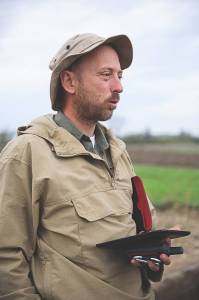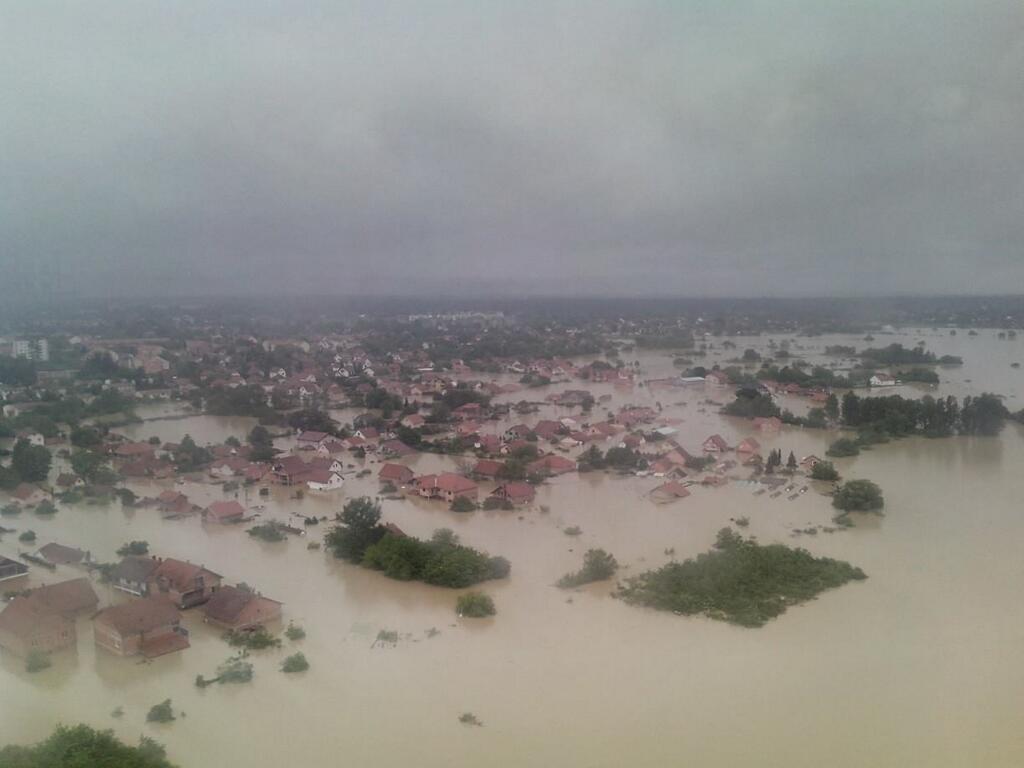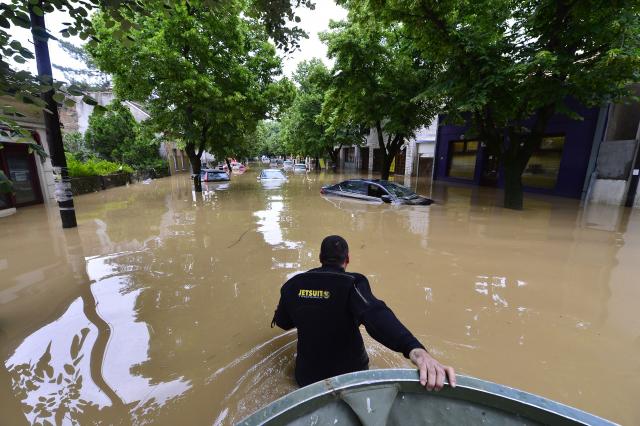
Adam Crnobrnja. Photographer: Vukasin Ljustina
My friend Adam, an archeologist, went back to Obrenovac to take care of his dog Garry and help those that stayed behind in their homes. He told me:
“I was in Obrenovac yesterday, rescued Garry and took what I could to uncle Luka, my father-in-law. The police blocked the bridge leading to the power plant. I begged them to let me pass, showing a balloon with gasoline for the generator, pounds of dog food, explaining that I carry some batteries for mobile phones, that I need to get cans, batteries, and many other things from my home to give to the people who stayed.
The police would not let me pass, so I asked them what they would do if I swam across the Sava river. When they replied that they had order not to let anyone go past them, my brother Mark drove me a few hundred metres down the river where I climbed a barrage and ran to the other side. There was still water in front of my house. I picked up as much as I could and went to uncle Luka.
Disaster awaited me. The water receded but was still between 30-50 cm high. Cars were covered in mud. The apartment of Zarko, my brother-in-law is on the ground floor and full of water. But the family’s spirits were high. They tried to clean up what they could straight away. I helped them, then sat down to talk to Zarko to try to calm him down. Garry stayed at Luka’s.
On my way back, carrying about 30 pounds of my belongings on my back, I talked to people in the street who told me that six of their neighbours drowned. Are they among the thirteen fatal victims mentioned in the media reports?”
Why did this happen?
Why did this have to happen? Force of nature they say. Lack of responsibility on all levels of government. People were not warned in time, despite reports from meteorologists. A lack of flood protection and emergency planning. Climate change is hardly mentioned but most true.
Experts say that this has been the worst rainfall since records began in more than a century. Obrenovac is said to have taken the hardest blow. The small suburb of Belgrade produces 60 percent of its electricity from two coal-based thermal power plants that are more than 30 years old.

Obrenovac under water
The course of the Kolubara river, which destroyed Obrenovac, was changed back in the 1970s, so that more coal could be excavated from the Kolubara open pit mines. All but one of these mines are now flooded. The rivers have brought Obrenovac toxics from more than 1,000 hectares of dumped coal ashes and landfills.
We have engineered nature for ages, exploiting it as if it belonged to us. As if we were not its children. Maybe this is the time for former Yugoslavian states that are totally dependent on energy produced from coal, to start thinking about diversification.
Please help!

Photographer: Marija Trbojevic
Disaster relief came immediately from all over the world. Our closest neighbours were the first to help with machines, rescue teams, vehicles, food and water. But the struggle to get back to normal life in the flooded areas is only just starting.

Rastko Šejić. Photographer: Marko Ristic
We need chemicals to clean up. We need to to rebuild infrastructure and our homes. We need furniture, home appliances, food, clean water, cattle,… We need know-how, projects, best practice and investments to help us stop a disaster of this scale from happening again.
We have lost a lot. Some have lost everything. If you can, please HELP!